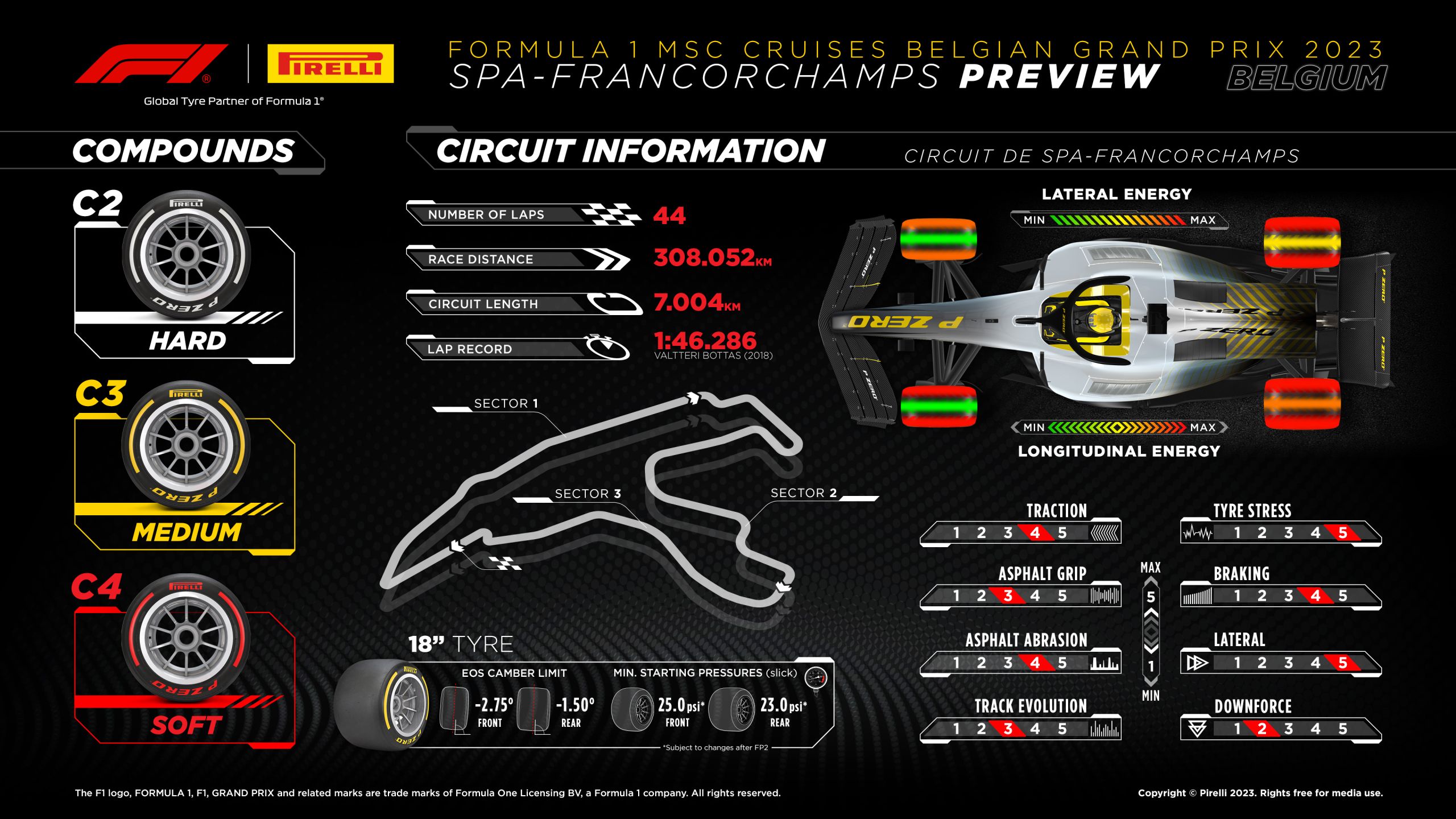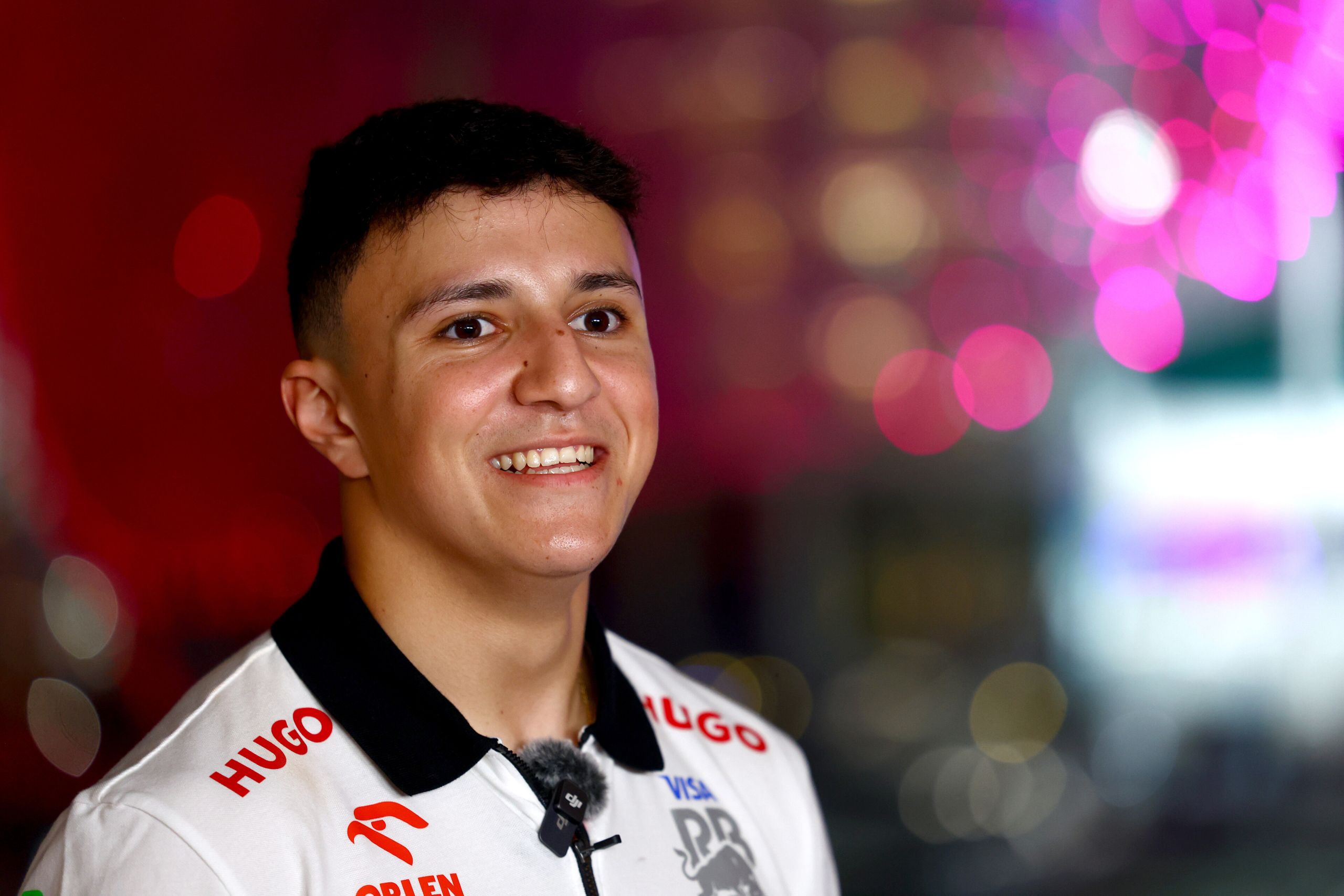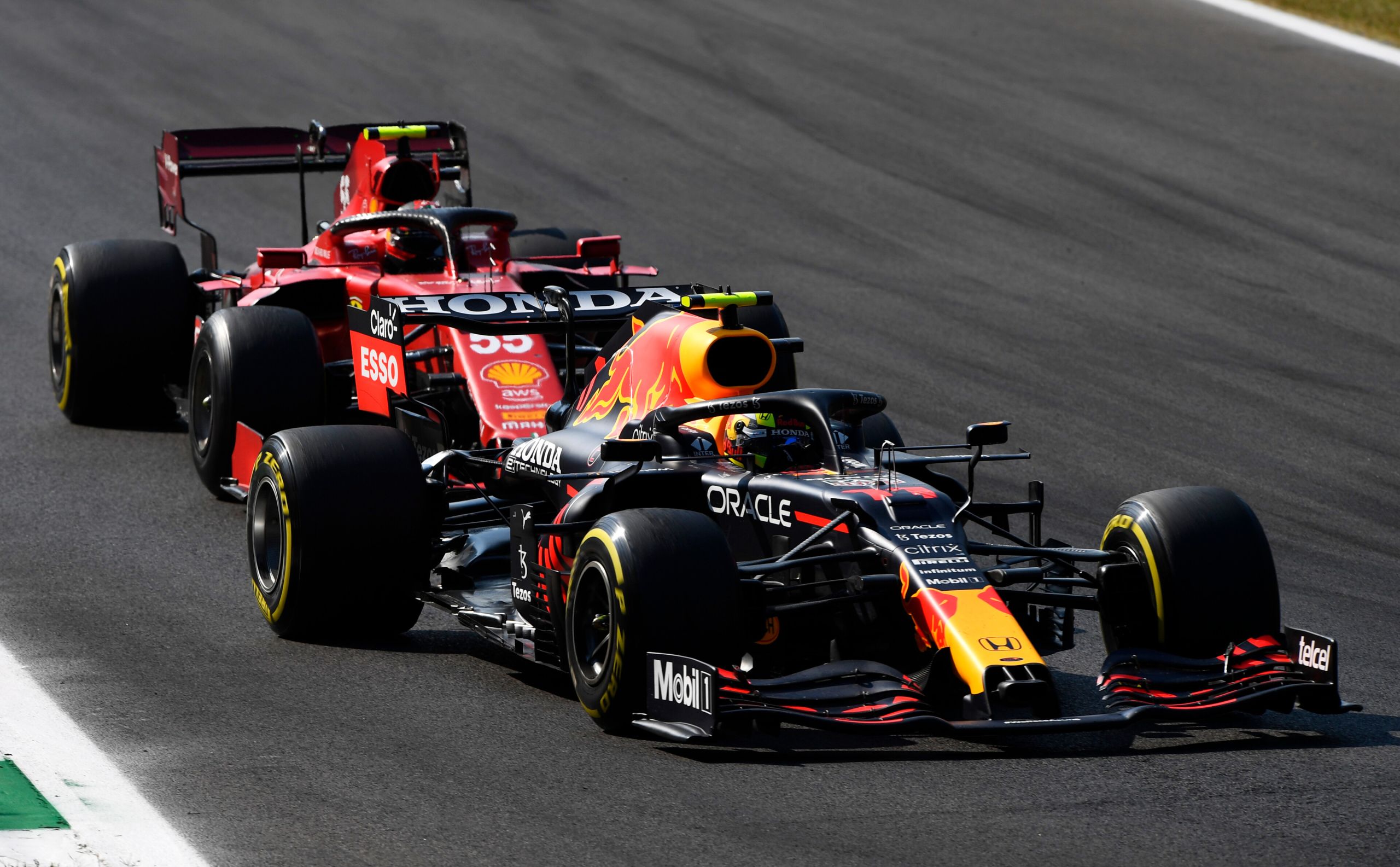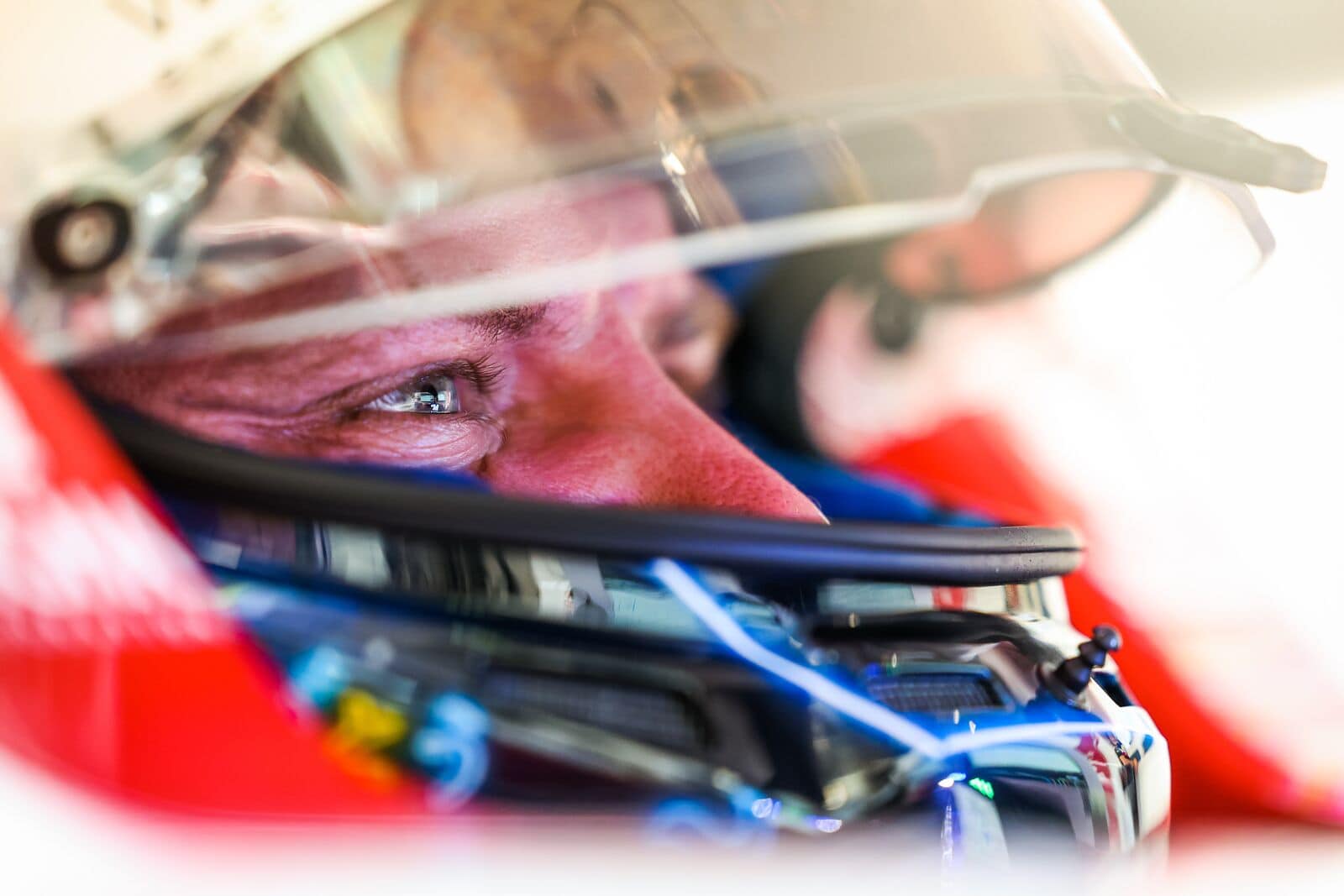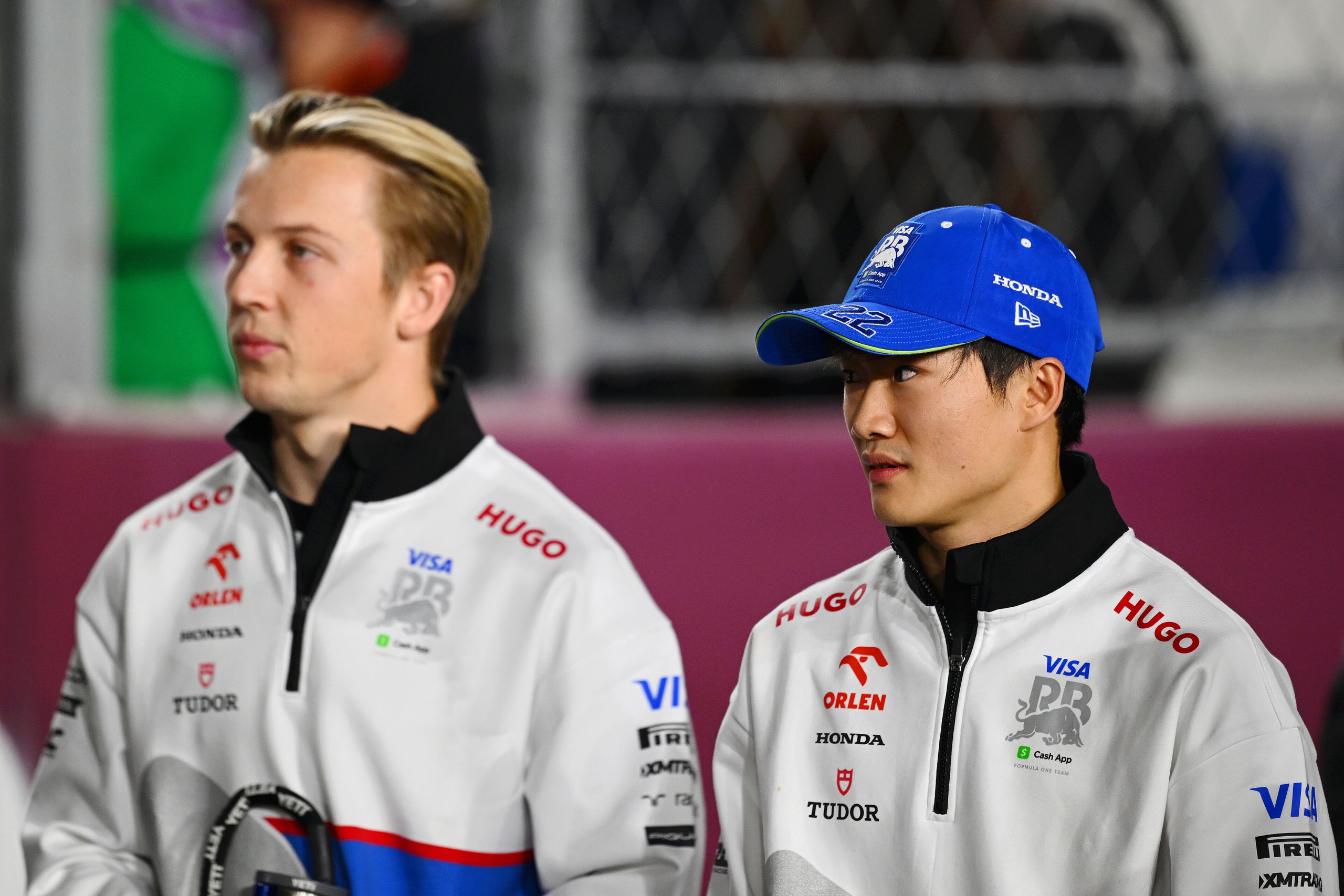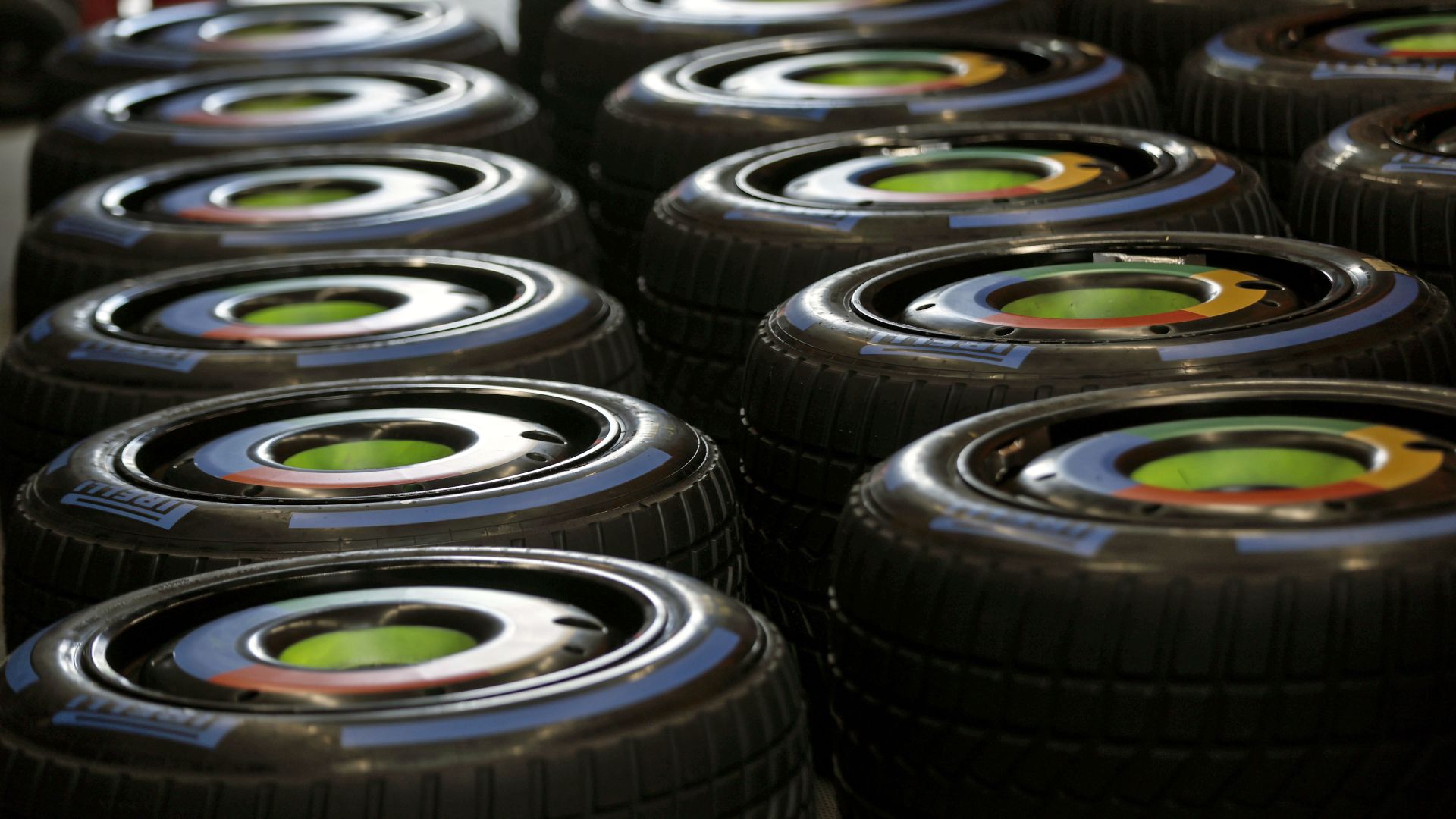

2023 Belgian Grand Prix: Selected Tyres – As was the case for the 2022 Belgian Grand Prix, the teams will have the C2 as P Zero White hard, C3 as P Zero Yellow medium and C4 as P Zero Red soft.
Along with Silverstone and Suzuka, Spa-Francorchamps is a circuit where the tyres are subjected to considerable forces. The most challenging part for tyres is the compression at Eau Rouge followed by the climb up to Raidillon: consisting of a high speed left-hand turn, where the downforce squashes the car into the ground, followed by another high-speed right-left kink where the car goes light at the top of the hill onto the Kemmel straight.
Spa is the longest track on the Formula calendar at 7.004 kilometres, with 44 laps scheduled for the Belgian Grand Prix. When the circuit was inaugurated back in 1921, it was around double the length at 14.9 kilometres.
Last year, nearly all the teams opted for a two-stop strategy using all three compounds. Red Bull’s Max Verstappen lined up 14th on the grid after a penalty but won the race with a great fightback, starting on the softs and then completing two stints on the medium.
Spa-Francorchamps is also a special place for Charles Leclerc, who won his first Formula 1 race there with Ferrari in 2019. The Italian team has taken the most victories at Spa (14) since 1950, while Michael Schumacher has the highest number of individual victories (six).
The circuit also had the biggest difference in elevation of any track all year. The highest point is at Malmedy (around 468 metres above sea level) while the lowest is Paul Frere (around 366 metres above sea level). That’s a difference of 102.2 metres: more than the height of the Big Ben clock tower in London.
Mario Isola – Pirelli Motorsport Director
“After just a couple of days off, there’s another Formula 1 race this weekend: the last before the summer break. The Belgian Grand Prix is one of the most prestigious races on the calendar, held on a track that’s particularly challenging for drivers, cars, and tyres. We’ve nominated the same line-up of compounds as last year – C2, C3, and C4 – to offer a wide range of strategy options; at least if the rain holds off. Traditionally, the weather at Spa is a key factor throughout the weekend; the fact that the grand prix has moved dates – from the first race after the summer break to the last race before it – should make little difference, as the forecast is always variable anyway. The length of the track, with Spa being the longest lap of the year, and the variation in elevation – which is also the biggest of the whole season – means that it’s easy to find wet conditions on one part of the track while it’s completely dry elsewhere. New for this year is Spa becoming the third Sprint venue of the season, after Baku and Spielberg, with a Sprint Shootout on Saturday morning followed by a 100-kilometre race in the afternoon. With just an hour of free practice before qualifying on Friday (which, for now, seems to be the day most at risk of rain) there will be even less time than usual to set up the cars. At Spa, we tend to see some of the biggest differences in terms of aerodynamic setup between the teams: some prefer more downforce in order to push harder during the second sector while others prefer a looser car to have extra speed to attack and defend more down the straights. With two races this year, one of the most spectacular venues of the season is set to put on an even bigger show.”
2023 Belgian Grand Prix: Selected Tyres
